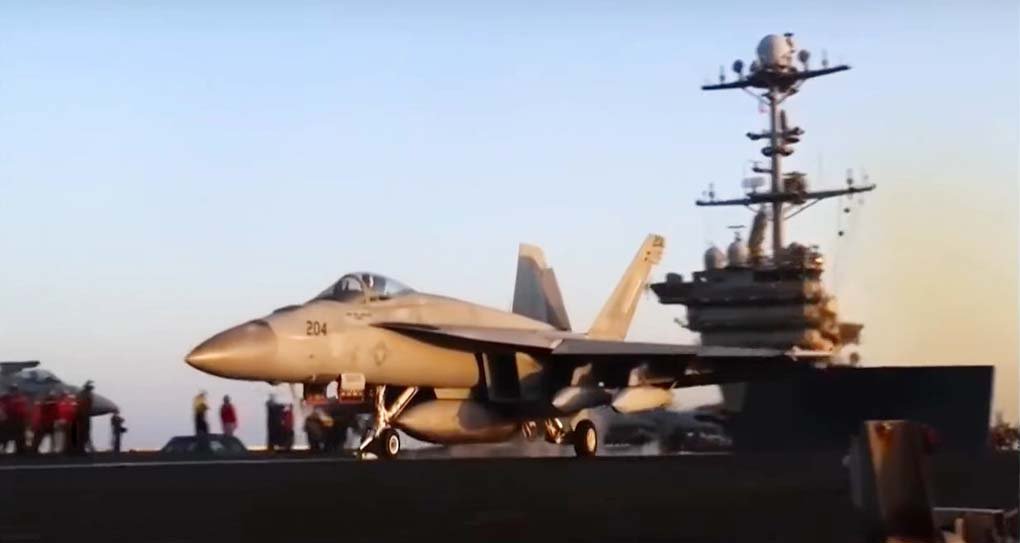Introduction
In the pre-dawn hours of October 12, explosions rocked Yemen’s coastal city of Hodeidah as U.S. fighter jets struck Houthi rebel positions, marking the fourth such raid in two weeks. The Pentagon confirmed the strikes targeted missile launchers aimed at Red Sea shipping lanes, but for residents like Fatima Al-Mahdi, the bombardment was yet another night of “fire and terror.”
“We hid under the stairs, praying the roof wouldn’t collapse,” said Al-Mahdi, a mother of three, in an interview with Al Jazeera. Her story mirrors thousands across Yemen, where U.S. intervention in a grueling civil war has reignited debates over Washington’s role in the Middle East—and whether military force can deter the Houthis’ relentless campaign.
This article examines the strategic calculus behind the airstrikes, the humanitarian catastrophe unfolding in their shadow, and the high-stakes gamble that could pull regional powers like Iran and Saudi Arabia deeper into conflict.
The Battle for the Red Sea: Why Yemen Matters
Now in its eleventh year, Yemen’s civil war has long been a proxy battlefield. Mostly controlling northern Yemen, including the capital Sanaa, the Zaydi Shia rebel organization known as the Houthis are supported by Iran. A U.S.-backed Saudi coalition has fiercely responded to their strikes on Saudi Arabia’s and Emirati infrastructure as well as more lately on commercial ships in the Red Sea.
But the Houthis’ growing sophistication has alarmed Washington. Reuters reports the group now possesses Iranian-made drones and ballistic missiles capable of striking Israel, 1,200 miles away. A threat underlined by a March attack on a U.S. vessel off Yemen’s coast, Houthi leader Abdul-Malik al-Houthi promised in January to “burn the interests of America and its allies,” should attacks continue.

U.S. Strategy: Deterrence or Escalation?
The Biden administration frames the strikes as defensive. “We’re degrading their ability to threaten global trade,” said Pentagon spokesperson Sabrina Singh in an April press briefing cited by The New York Times. Yet critics argue the raids risk entangling America in another endless Middle Eastern quagmire.
“Every bomb dropped creates ten new Houthis,” warned Yemeni analyst Farea Al-Muslimi of the Sana’s Center for Strategic Studies. Though the Pentagon denies these numbers, data from conflict monitor Airwars points to U.S.-led strikes killing over 200 civilians since 2022.
The Houthis, meantime, stay rebellious. Spokesperson Mohammed Abdul-Salam of the Houthi-run Al-Masirah TV said, “Our missiles will drown U.S. warships in the Red Sea.”
Humanitarian Catastrophe: “War on Top of War”
Yemen’s civilians pay the steepest price. The UN estimates 21.6 million—two-thirds of the population—need aid amid famine-like conditions. Airstrikes have crippled infrastructure, with Save the Children reporting that 70% of Yemen’s hospitals lack fuel for generators.
In Hodeidah, a vital port city, the destruction of a water treatment plant by a September 2023 strike left 120,000 without clean water. “Children are dying from cholera, not just bombs,” said Dr. Aisha Numan at a makeshift clinic, her account corroborated by The Guardian.
The U.S. has pledged $200 million in humanitarian aid this year, but delivery remains sporadic due to Houthi blockades and bureaucratic delays.

Regional Tinderbox: Iran, Saudi Arabia, and the Shadow War
The strikes have heightened tensions between Iran and Saudi Arabia, who reached a fragile détente in 2023. Bloomberg writes that Tehran has supplied the Houthis with modern sea mines, while Riyadh has expedited weaponry acquisitions from the U.S., including $3 billion in missile defense systems.
“Saudi Arabia wants out of this war, but the Houthis—and Iran—won’t let them,” said Middle East analyst Aziz Al-Gharbi in Arab News.
For Israel, the conflict hits closer to home. The Houthis have launched over 30 drones toward Eilat since the Israel-Hamas war began, with The Times of Israel reporting a direct hit on a chemical depot in March.
Global Repercussions: Shipping Chaos and Oil Markets
The Red Sea, a corridor for 12% of global trade, has become a flashpoint. Houthi attacks have forced shipping giants like Maersk to reroute vessels around Africa, adding 10 days and $1 million in fuel costs per trip. Lloyd’s List estimates a 22% drop in Red Sea traffic since January.
Oil prices, meanwhile, have surged 15% in 2024, with Brent crude nearing $90 a barrel. “Every missile fired at a tanker sends tremors through the global economy,” said energy analyst Leila Benali in Reuters.
Voices from the Ground: “We Are Not Collateral”
In the village of Abs, northwest Yemen, a September U.S. strike leveled a home, killing farmer Ahmed Ali and his six children. “They were not Houthis. They were poor. They were nothing,” wept his brother, Khalid, in a video shared with BBC Arabic.
The Pentagon maintains it investigates all civilian harm claims, but advocates say accountability is rare. “The U.S. writes condolences, not checks,” said Radhya Al-Mutawakel of the Mwatana Organization for Human Rights, citing a 2023 strike that killed 14 at a wedding.

What’s Next? A Conflict With No Endgame
Experts warn of a protracted stalemate. The Houthis, entrenched in Yemen’s mountains, can replace losses faster than the U.S. can bomb them. Meanwhile, Saudi Arabia’s focus on economic modernization under Vision 2030 has left it wary of deeper military commitments.
“The U.S. is stuck,” said former CIA analyst Bruce Riedel in The Brookings Institution. “Withdraw, and the Red Sea burns. Stay, and you’re fueling the next generation of militants.”
Conclusion: A War the World Forgot—Until Now
As U.S. jets continue their sorties over Yemen, the conflict serves as a grim reminder of Washington’s limited influence in a region weary of foreign intervention. For Yemenis like Fatima Al-Mahdi, survival—not geopolitics—is the priority.
“Let the world fight over the Red Sea,” she said. “We just want to wake up without hearing planes.”
Related Video:
Sources:
- Al Jazeera: Civilian accounts and Houthi statements.
- Reuters: Houthi military capabilities and oil market analysis.
- The New York Times: Pentagon strategy and official U.S. comments.
- Airwars: Civilian casualty estimates.
- The Guardian: Humanitarian conditions in Hodeidah.
- BBC Arabic: Strike on Abs village.
- Arab News: Saudi-Iran regional tensions.
- Lloyd’s List: Red Sea shipping data.
- The Brookings Institution: Expert analysis on U.S. strategy.
Explore More:
- Yemen’s Houthis Remain Defiant Following U.S. Airstrikes
- Gaza Gripped by Fear as Airstrikes Shatter Ceasefire Hopes
- UN Official Urges De-escalation Amid Rising Tensions in Yemen, Israel, and the Red Sea

